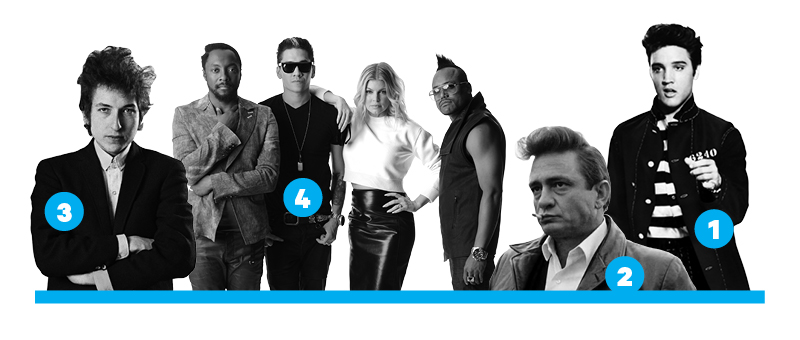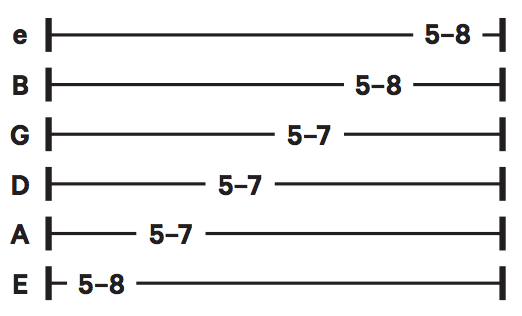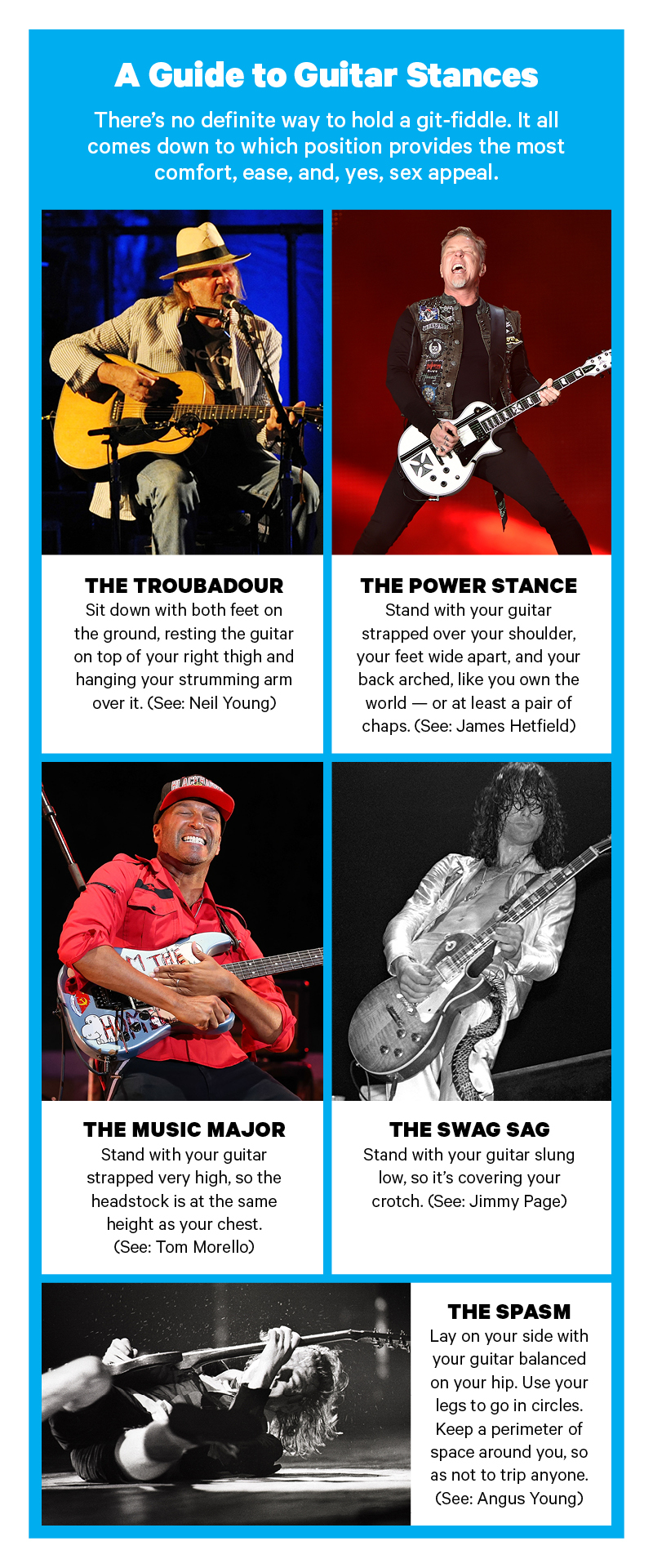By the End of This Article, You’ll Be Able to Play the Guitar
Don’t be that guy who brings his guitar to every party and waits for the conversation to die down so he can launch into “Wonderwall.” Be the other guy: the one who can play it better.
There’s more to learning the six string than peacocking. Studies show guitar playing can actually reduce stress on a genomic level, reversing your body’s response to pressure. (Is it any wonder Keith Richards is immortal?) It’s also said to sharpen brain function, which helps guard against future mental decline. But the main reason to pick up an axe? It can be a fun, fulfilling creative outlet — and yes, when played right (and at the appropriate time), can impress the pants off people.
Know Your Chords
Iconic punk fanzine Sideburns said it best: “This is a chord. This is another. This 3 is a third. NOW FORM A BAND.” If you can get a grasp on chordal, rhythmic playing, you can play most songs. After all, the five main chords — A, E, D, C, and G — are the building blocks of music. The below diagrams (because you’re not ready for actual sheet music) will get you started. To read them, tilt your fretboard flat: the top line in each diagram represents the top E string, and the numbers indicate which finger to use on each string. To play a chord, press down on the required notes and, using your pick, strike the strings in one fluid motion. Bam! Your first chord. Now hit the strings again going in the opposite direction. You’re strumming! Spend some time learning how to play your chords cleanly, making sure you’re not hitting any unnecessary strings. Nothing kills the vibe like a bum note.

Songs You Can Play With Just a Few Chords

1. “All Shook Up” – Elvis Presley (A, D, E)
2. “Ring of Fire” – Johnny Cash (C, D, E)
3. “Mr. Tambourine Man” – Bob Dylan (G, A, D)
4. “I Gotta Feeling” – Black Eyed Peas (C, D, G)
The Art of Winging a Solo
Relax: nobody’s expecting you to shred through “Hey Joe” with your teeth anytime soon. Still, a guitar solo can add great emotional depth to a bridge like no other instrument can. So what if you’re no Hendrix? Do what everyone else does: pretend to be.
Step 1: Learn some basic soloing techniques
BEND – Fret a string with your ring finger, placing your pointer and middle finger on the frets behind it. Push the string up or down against the neck, making its pitch rise.
HAMMER-ON – Fret a string with your ring finger. Pluck it, and then forcefully push down on the note below it.
PULL-OFF – Fret a string with your ring finger. Pluck it, and then pull your finger off, while keeping your index finger fretted a note below. Pull-offs and hammer-ons can be used to increase a solo’s speed.
Step 2: Memorize the Pentatonic Scale
There’s a good reason the pentatonic scale is the most common scale used in rock solos — it sounds great over just about every chord progression. Start with the minor pentatonic scale, with the root on the 5th fret (in the key of A). The numbers in this tab indicate which frets to push on which string. Practice the hell out of it.

Step 3: Integrate the soloing techniques into the pentatonic scale
Play the scale forwards and backwards, using bends, hammer-ons and pull-offs throughout. Mix up the order of the notes, and vary your rhythms. Try to complement the underlying chord sequence. For added effect, prop your leg up on something.

When It’s Acceptable to Bust out a Guitar at a Party
1. If you are specifically asked to by the host.
2. If it’s your party and the guitar is just “sitting there.”
3. If you’re in the band hired to play the party.
4. If someone requests “Freebird.”










